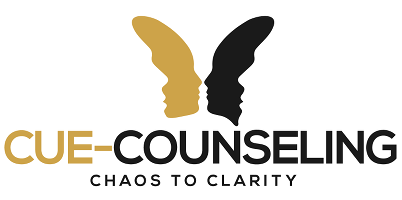Breaking Free from Negative Self-Beliefs with EMDR Therapy
How EMDR Helps Heal the Emotional Wounds That Hold You Back
Have you ever struggled with a recurring negative belief about yourself that feels true, even though it’s deeply painful? Maybe you’ve experienced repeated rejection and concluded that you’re not good enough. Perhaps you grew up with emotional neglect or abuse, and now believe you are unworthy of love or respect.
These types of internal beliefs often take root in early life experiences, especially those involving abandonment, trauma, or emotional invalidation. Over time, they become deeply embedded — shaping how you see yourself and the world, even if they’re not based on truth.
Why We Hold On to Negative Beliefs
Many of us experience a disconnect between what our brain knows and what our heart feels. You may logically understand that you’re valuable and deserving, but emotionally, you still feel broken, unlovable, or not enough.
This emotional dissonance is what brings many individuals into therapy — and it’s exactly the kind of issue that EMDR therapy is designed to address.
What Is EMDR Therapy?
EMDR (Eye Movement Desensitization and Reprocessing) is a powerful, evidence-based therapy that helps the brain reprocess traumatic memories and negative beliefs, so they no longer feel emotionally overwhelming or true.
Rather than simply talking through painful events, EMDR allows the brain to access its natural healing process and shift negative self-perceptions into more balanced, life-affirming truths.
📌 Learn more from EMDR Consulting’s official overview
How EMDR Works
EMDR is a structured, multi-phase therapy approach that includes:
-
Gathering client history and identifying treatment goals
-
Building emotional regulation and coping skills
-
Developing a target sequence plan for processing traumatic or distressing memories
-
Using bilateral stimulation (e.g., eye movements, tapping) to reprocess targeted memories
-
Replacing negative core beliefs with healthier, adaptive self-understanding
-
Integrating these changes into daily life for long-term growth
It’s important to note: EMDR is not a one-session therapy. The pace and length of treatment vary based on the individual and the complexity of the issues being addressed.
What EMDR Helps Treat
Therapists use EMDR to address a wide range of issues, including:
-
Childhood trauma or neglect
-
Anxiety and panic disorders
-
PTSD and complex trauma
-
Depression tied to negative self-image
-
Emotional dysregulation and relationship struggles
-
Grief and loss
-
Persistent shame or self-worth issues
What sets EMDR apart is its focus on targeting and resolving the negative beliefs that were formed in response to painful experiences. It’s not just about symptom relief — it’s about changing how you see yourself at your core.
EMDR Therapy Is Transformational — But It Takes Work
EMDR is not always easy — confronting deep-seated emotional wounds can be uncomfortable. But the process is worth it. Through EMDR, clients often report:
-
Feeling lighter and more emotionally free
-
Letting go of beliefs like “I’m not enough” or “I’m unlovable”
-
Gaining clarity, confidence, and renewed self-worth
-
Building healthier relationships and boundaries
-
Reconnecting with hope and a sense of purpose
As an EMDR therapist, I’ve seen clients break free from the emotional weight of their past and step into lives defined not by trauma, but by resilience, growth, and truth.
Is EMDR Therapy Right for You?
If you’re struggling with persistent negative beliefs, trauma, or emotional pain that continues to affect your daily life, EMDR therapy may offer the breakthrough you’ve been seeking.
You deserve to believe in your worth — and to feel it, too.
